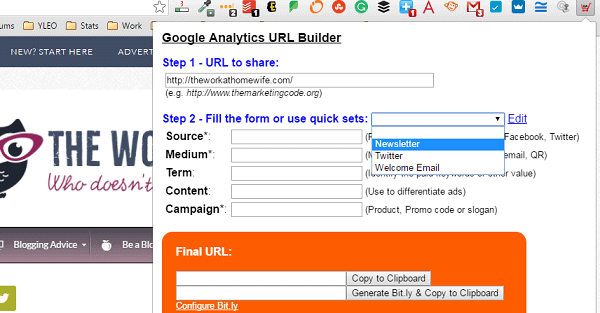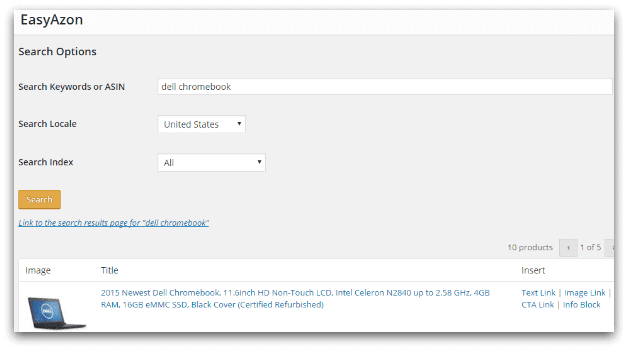 Affiliate marketing revenue is an important part of any successful blogger’s business plan. Many of the advice out there targets beginners, however. If you are at a more advanced stage of the blogging game, here are some of my favorite affiliate marketing strategies for taking things to the next level.
Affiliate marketing revenue is an important part of any successful blogger’s business plan. Many of the advice out there targets beginners, however. If you are at a more advanced stage of the blogging game, here are some of my favorite affiliate marketing strategies for taking things to the next level.
Identify Your Pillar Products
Just as you should have long-form go-to resource posts on your blog – pillar posts – you should also have a handful of pillar products to promote as an affiliate. When identifying these products, you are looking for must-have resources that relate to your key content categories.
As an example; if you are a homeschool blogger, your pillar affiliate products may include your favorite place to purchase curriculum, a place to purchase printables, your favorite homeschool planner, and maybe a membership site, support group or convention. Think about any frequently asked questions you receive when seeking out products. And if you have more than one product you love in a category, consider narrowing it down to one inexpensive or beginner product and one that’s more expensive or advanced. Offering readers too many options can sometimes send them elsewhere looking for additional reviews or advice.
Set Up Redirects
If you have been blogging for any length of time, you know affiliate products come and go. Occasionally they change platforms. Rather than having to seek out every instance of a link in your blog posts, eBooks and elsewhere, I highly recommend setting up redirects for linking to affiliate products.
The benefits of redirecting are many. In addition to being able to switch out one link and having every link everywhere updated, you are also going to have “clean” links for sharing on social media. Rather than having a link that looks like http://www.kqzyfj.com/click-3891866-11813643-1445467985000, you can have links that look like https://theworkathomewife.com/go/stitchfix. You may even be able to remember the latter without having to grab a link whenever you need to make a recommendation.
You can set up redirects by creating a htaccess file and uploading it to your site directory, or you can use a plugin like Pretty Links.
Track Outgoing Links in Google Analytics
If you aren’t using a plugin that offers statistics like Pretty Links Pro, you should add Event tracking in your Google Analytics so you can identify which posts are making you the most money. You can then update and promote these frequently to increase your bottom line.
Another benefit to Event tracking is that you will be able to see what traffic is clicking – and most likely buying. You can then concentrate your marketing efforts where you are getting the best results whether that be Facebook, Pinterest, LinkedIn, search traffic, etc. Pretty Links Pro integrates with Google Analytics as well.
![]()
Use URL Builder When Sharing Links on Social Media and in Emails
While Google Analytics can provide you some insight into where incoming traffic is coming from, it leaves a lot to be desired for the advanced affiliate marketer. You may see Email as a referrer, but which email? Is it your welcome email sending you traffic or was it your weekly newsletter? The same goes for social media. Is that Facebook traffic coming from your Page or someone else’s? Or was it a Facebook Ad or Boosted post?
When you are ready to start whittling down your traffic sources, it only takes a second. Google URL Builder allows you to put in tracking tags before sharing your link on social media, in an email or an ad. There is even a Chrome extension that will capture the URL you are on and store frequent campaigns. I use this extension a lot for my weekly newsletters. You will then start seeing that traffic trickle down over time to your affiliate links.
Keep in mind that URL Builder will only track links to your site. This won’t help you track affiliate links. Any tracking tags you add would show up in your affiliate partner’s Google Analytics, not yours.

Optimize Old Posts
When many bloggers start affiliate marketing, their first thought is they need to create new content that revolves around the product they want to promote. Their next thought is often that affiliate marketing doesn’t work when their glowing product review doesn’t generate immediate income. Straight-up product reviews are often a hard sell to an existing audience. Especially if it’s not something they are specifically asking for.
Rethink your approach. Work backward. Go to your Google Analytics and pull a list of your most popular posts for this month, this quarter, this year. You can find your most popular posts in Google Analytics by going to Behavior > Site Content > All Pages. Export your top 25. You can change the number being shown at the bottom of the list under Show Rows.
Start updating these frequently visited posts. Make sure the information is up-to-date. Make sure any existing links still work. Now, start plugging in some of those pillar affiliate products that are a good fit. Don’t shove them all in there. Instead, choose strategically. Thinking back to that homeschool example, if the post is about curriculum add a recommendation for where to purchase those products. Add your affiliate banner within the post. Don’t go overboard. Recommendations should be a side note and add to the post, not take away from it.
This is a much easier way to approach affiliate marketing than trying to write reviews. Every few months, update your older posts. As you write new content, sprinkle in your recommendations where appropriate.
Brainstorm Ways to Unique Ways to Promote Pillar Products
One thing I have come to embrace in the affiliate marketing space, the past year is coming up with unique ways to promote my favorite products. So many bloggers are happy sticking with the status quo – a review and a banner. You have so many more opportunities to promote your favorite things in an authentic and engaging way while providing enormous value to your readers. Several of these opportunities may even help increase your authority and reach.
- Host a webinar with your favorite product creator sharing industry tips
- Host a social media contest on Facebook, Instagram or Pinterest
- Ask for a custom coupon to be shared with your newsletter subscribers
- Create an email autoresponder series
- Post a tutorial or tips video on YouTube
- Share photos of yourself using your favorite products on social media
Think outside the box and don’t be afraid to experiment. All of the above, with the possible exception of the coupon, are more “soft sell” techniques. You are sharing your love of the product in a genuine and value-driven way. Even if the person doesn’t buy the product being linked to, they are still walking away with something – even if it’s just a feel-good moment. Consumers today want to be sold to without feeling they are being sold to.
Pro Affiliate Plugins
As an affiliate marketer earning a full-time income from my efforts, I have several plugins that have helped save me time and increase my sales.
Pretty Links Pro – We talked about this one earlier. I can easily add affiliate links to my blog posts from within the post editor. I can see stats down to the page level. And let’s not forget that when a program or link change, I have only one place I need to update as opposed to hunting down dozens of links.
EasyAzon – This one allows me to search for and add Amazon products to my posts from within the post editor. It’s such a time saver! And, I can localize my Amazon links. This means I can still earn a commission when a visitor from outside the U.S. clicks through and places an order.

ConvertKit – I recently moved my newsletter list over to ConvertKit and am loving it so far. I can easily add as many content upgrades to my blog as I please without having to create a new list of subscribers each time. Every new subscriber gets some free gift whether it be my 7-day work-at-home series, a list of my recommended blog tools, or some other goodie. They can get as many of these as they want and I only pay for them once, and they only receive one weekly newsletter.
VigLink – I don’t rely heavily on VigLink for affiliating links to merchant websites, but it does earn me $50 to $100 each month in catching links to things that I am either not an affiliate for yet, or maybe I don’t plan on promoting enough to sign up.

Bookmarking this post, so that way I can find your links when I need them without having to ask you for them. 🙂 Thank you for the resources!
😀 Thanks, Anna!
Great lessons there! I think you said everything that I know but made it sound fresh.
One thing though that I did not know is a way to redirect affiliate links. I had noticed that most sites use the tactics you recommended here but what I did not know is how they did that.
One question related to that. Should the links be temporary redirects or permanent (301)?
Thanks for the lessons
Both of the plugins mentioned have knowledge bases in place that will advise you of current best practices and recommendations.
Some nice tips – thanks!
With old posts I like to go through my stats every now and then to find out the posts that are getting views even though it’s ages since they were written. Those are then ripe for revising or revisiting with a new page.
Pillar products are also great for creating extra content on – even to the extent of creating a giveaway product to help build your email list.